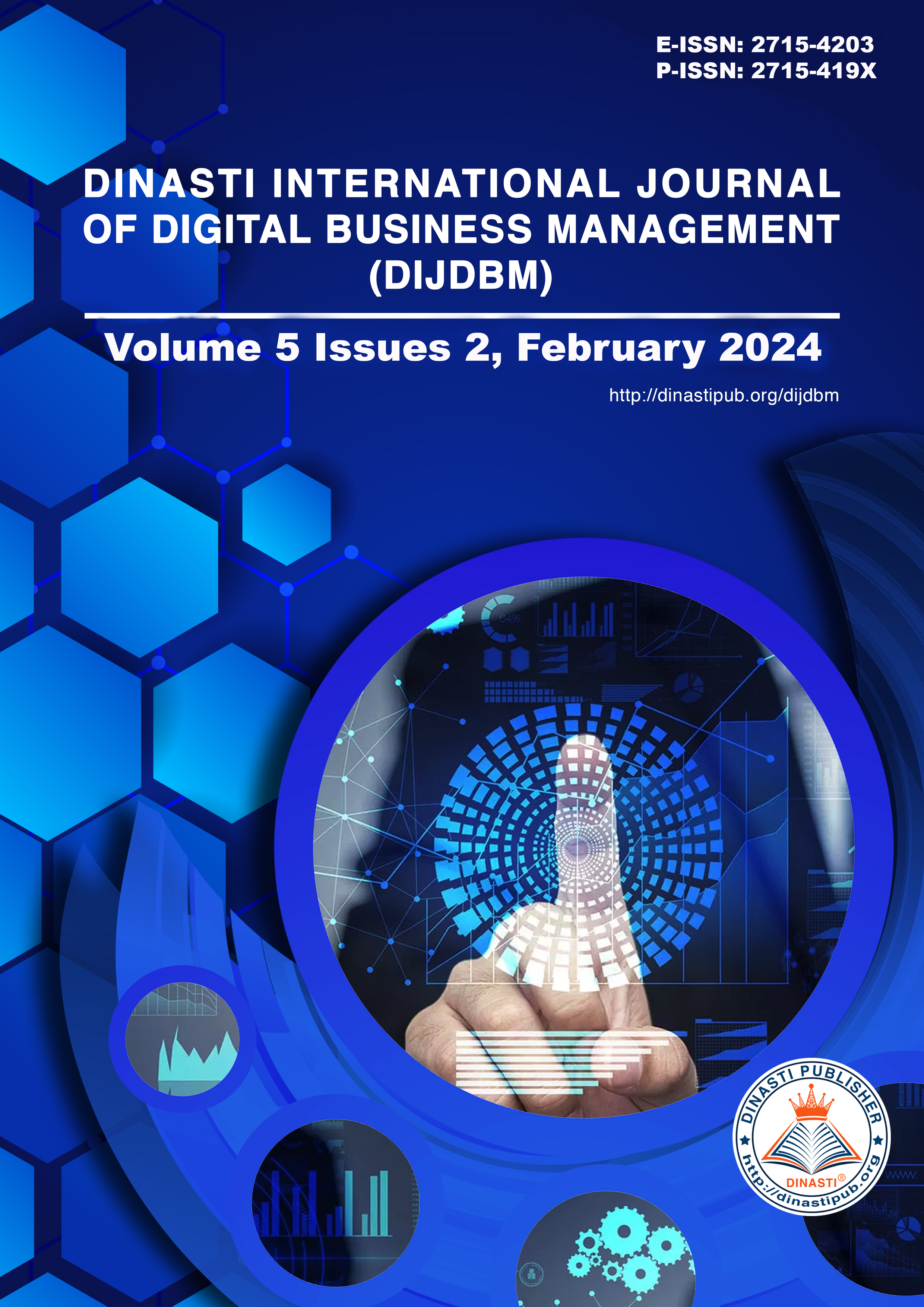Building a Winning Team: PT XYZ’s Approach to Optimizing Performance through Discipline and Culture
DOI:
https://doi.org/10.31933/dijdbm.v5i2.2180Keywords:
Discipline, Organization Culture and PerformanceAbstract
The purpose of this study is to find out and analyze: (1) Discipline (2) Organizational Culture (3) Employee Performance (4) Effect of Discipline and Organizational Culture on Employee Performance. The research method used was an explanatory survey, descriptive survey and Path Analysis. Based on the results of the study found that there are other factors that make targets in the company have not been achieved and a large number of employees delay, is another variable from Discipline and Organization Culture. PT. XYZ must find other variables and improve so that employee performance increases.
References
. Organizational Behavior, Jakarta: Gramedia, 2006.
Daft, Richard L. Organization Theory and Design, 6thth Edition. United States of America: South-Western College Publishing, 1998.
Harlie, M. (2012). The Effect of Work Discipline, Motivation and Career Development on the Performance of Civil Servants at Tabalong District Government in Tanjung, South Kalimantan. Journal of Management Applications Vol. 10, No. 4, December 2012: 860- 867.
Hasibuan, Malayu S.P. 2009. Management: Basic, Definition and Problems Revised Edition. Jakarta: Bumi Aksara.
Jones, Gareth R. Organization Theory, Text and Cases. Second Edition, United States of America: Addison-Wesley Longman Publishing Company, Inc, 1998.
Kusdi. Organizational Culture, Jakarta: Salemba Empat, 2011.
Mathis, Robert L., Jackson, John H., Valentine, Sean R. Study Guide - Human Resource Management, 14thth Edition. Thomson, Southwestern. 2014
Moekijat. 1999. Human Resource Management. Bandung: Mandar Maju Pabundu, Moh. Organizational Culture and Employee Performance Improvement, Jakarta: Bumi Aksara, 2010.
Radeswandri and Utami, T.N. 2013. "The Effect of Organizational Culture and Work Discipline on Employee Performance". Journal of Economics, Management, and Accounting, Vol.21, No.2.
Robbins, Stephen P. Organizational Behavior, 9thth Edition. New Jersey: Prentice- Hall, Inc, 2001.
Roe, Leslie W, Lloyd L. Byars. Management Skills and Application, Tenth Edition, New York: McGraw-Hill Irwin, 2003.
Setiyawan, Budi and Waridin. 2006. The Effect of Employee Work Discipline and Organizational Culture on Performance in the Radiology Division of Doctor Kariadi Hospital Semarang. JRBI. Vol 2. No 2. pp: 181-198.
Sinambela, L. P 2017. Human Resources Management, Jakarta: PT Bumi Aksara.
Susanto, A.B., Gede Prama, et al. Organizational Strategy, Yogyakarta: Amara Books, 2006.
Tika, Moh. Pabundu. Organizational Culture and Company Performance Improvement, Jakarta: Bumi Aksara, 2006.
Tulus, Tu'u. 2004. The Role of Discipline in Learning Behavior and Achievement. Jakarta: Grasindo
Tunggal, Amin Widjaja. Corporate Culture Concepts and Cases, Jakarta: Harvarindo, 2007.
Wibowo. Change Management, Jakarta: PT Raja Grafindo Persada, 2006. Wirawan. Organizational Culture and Climate Theory Application and Research, Jakarta:
Fourth Edition, 2007.
Zikmund, William G. 2000, Business Research Methods, Sixth Edition, the Dryden Press, Philadelphia.
Downloads
Published
Issue
Section
License
Copyright (c) 2024 Mutmainah Mutmainah

This work is licensed under a Creative Commons Attribution 4.0 International License.
Authors who publish their manuscripts in this journal agree to the following conditions:
- The copyright on each article belongs to the author(s).
- The author acknowledges that the Dinasti International Journal of Digital Business Management (DIJDBM) has the right to be the first to publish with a Creative Commons Attribution 4.0 International license (Attribution 4.0 International (CC BY 4.0).
- Authors can submit articles separately, arrange for the non-exclusive distribution of manuscripts that have been published in this journal into other versions (e.g., sent to the author's institutional repository, publication into books, etc.), by acknowledging that the manuscript has been published for the first time in the Dinasti International Journal of Digital Business Management (DIJDBM).















































